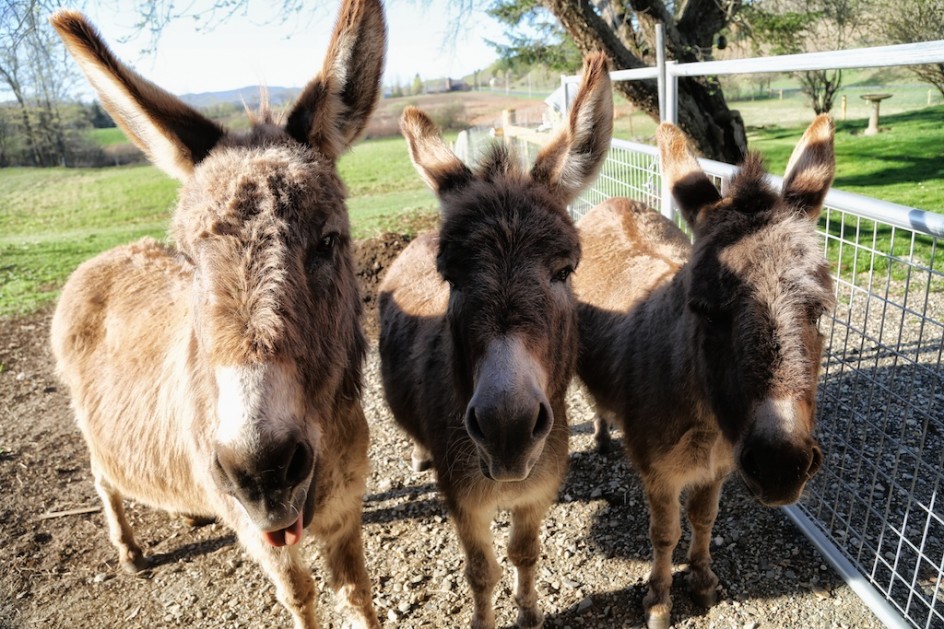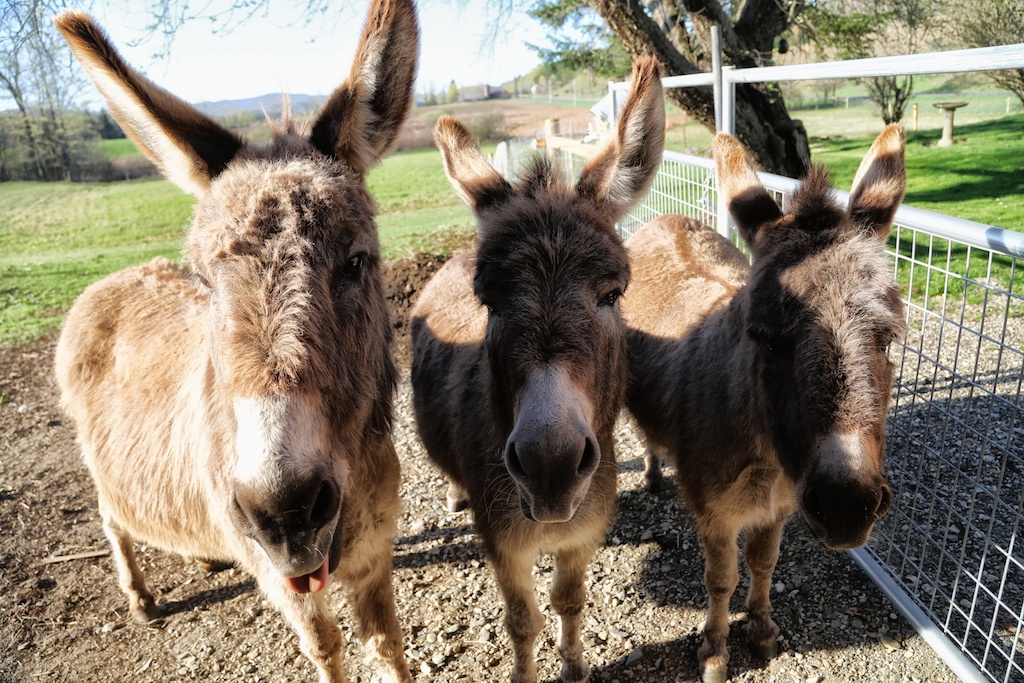
Although donkeys are generally portrayed as odd or funny in our culture, that was not always so. Donkeys are perhaps the most mythologized, painted, written about and spiritual creatures in the animal world. The animal we call a donkey is rightfully called an ass – a pejorative term in our culture. It wasn’t until the late eighteenth century that English-speaking people substituted the word donkey for ass to differentiate it from the worse arse, meaning the human butt. Increasingly, donkeys are being called “asses” again, although I am not yet completely at ease with that.
Donkeys were revered in the Hebrew, Christian and Muslim faith, sources of wealth, wisdom and companionship. More than 40 million donkeys, most of them in the Third World, continue to work with humans, haul goods and wood, till fields, provide transportation. Donkeys even had their own Celtic goddess. Epona was the protectress of horses, asses and mules (hybrid crosses between a donkey and a horse) as well as their human caretakers. The Romans adopted Epona as the protectress of their cavalry. Hephaistos was the Olympian God of fire, metalworking and stonemasonry, and is usually portrayed as a bearded man with a clubfoot, riding on a donkey. Jesus rode a donkey into Jerusalem, the Prophet Mohammed instructed his followers to be kind to donkeys, Napoleon rode a donkey into the Alps during his invasion of Europe.
We tend to laugh at donkeys, and smile at them, in our culture they are portrayed usually as somewhat goofy and ungainly creatures, but looking at Simon, Lulu and Fanny this morning, I was reminded of their very deep spiritual history and the great respect and dignity they were afford in emerging human societies. I see that dignity still in them.

